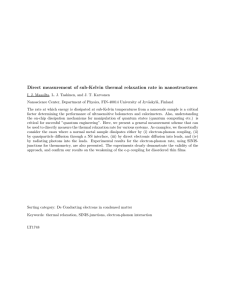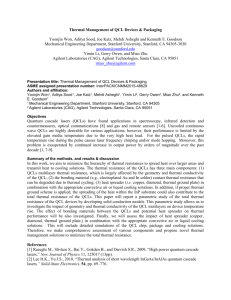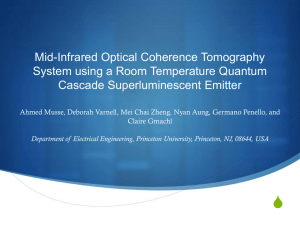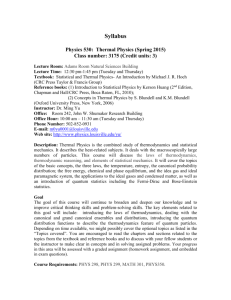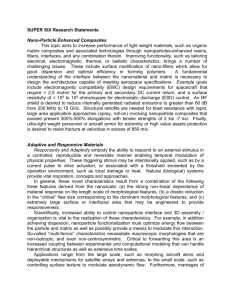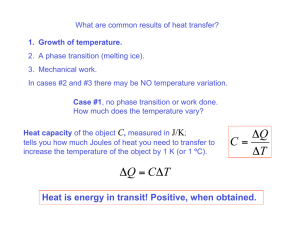Analysis of the thermal properties of GaInAs Quantum Cascade
advertisement
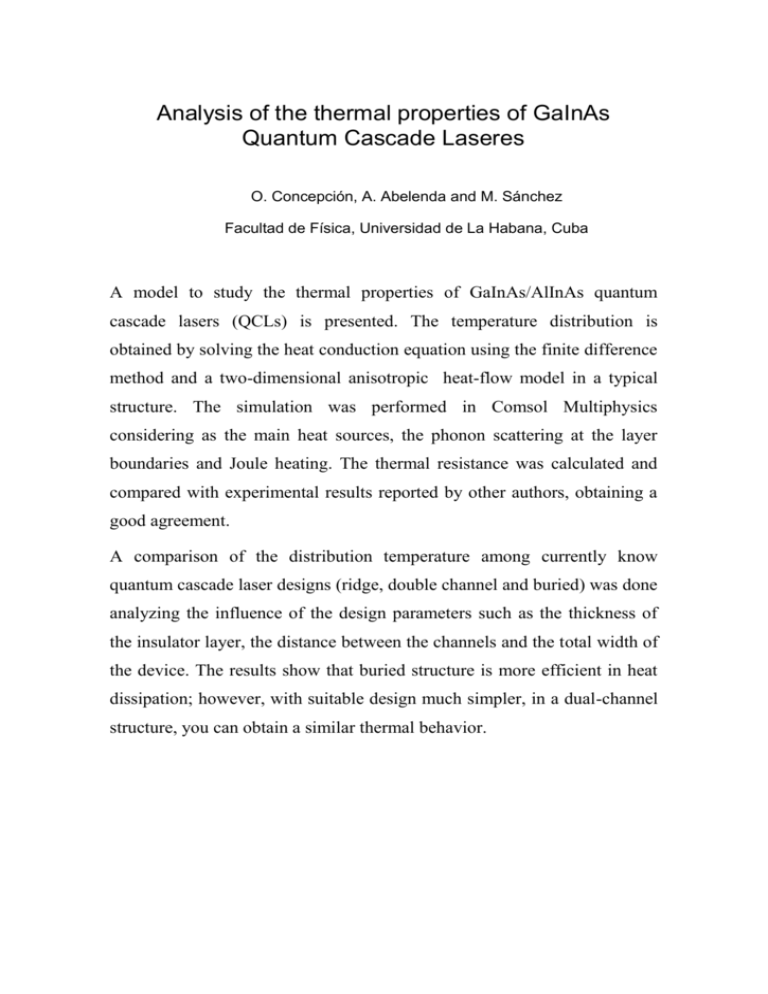
Analysis of the thermal properties of GaInAs Quantum Cascade Laseres O. Concepción, A. Abelenda and M. Sánchez Facultad de Física, Universidad de La Habana, Cuba A model to study the thermal properties of GaInAs/AlInAs quantum cascade lasers (QCLs) is presented. The temperature distribution is obtained by solving the heat conduction equation using the finite difference method and a two-dimensional anisotropic heat-flow model in a typical structure. The simulation was performed in Comsol Multiphysics considering as the main heat sources, the phonon scattering at the layer boundaries and Joule heating. The thermal resistance was calculated and compared with experimental results reported by other authors, obtaining a good agreement. A comparison of the distribution temperature among currently know quantum cascade laser designs (ridge, double channel and buried) was done analyzing the influence of the design parameters such as the thickness of the insulator layer, the distance between the channels and the total width of the device. The results show that buried structure is more efficient in heat dissipation; however, with suitable design much simpler, in a dual-channel structure, you can obtain a similar thermal behavior.
